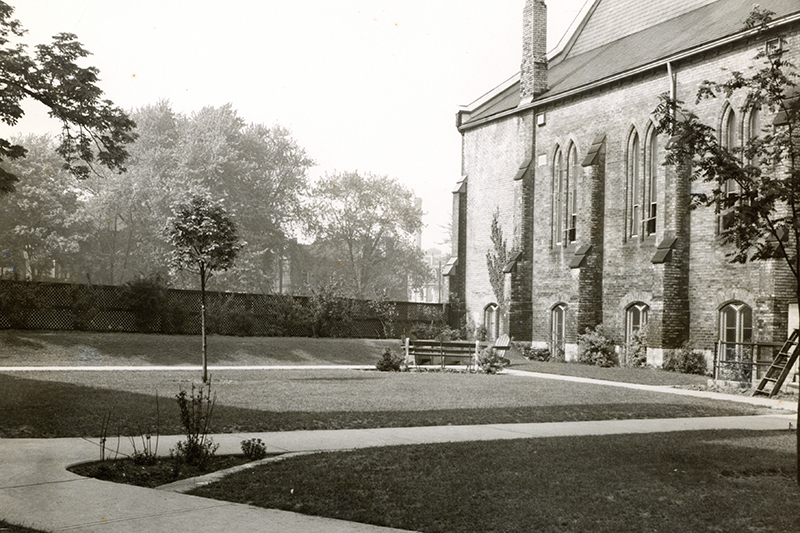When visitors enter St. Michael’s through the gates on St. Joseph Street, a hidden greenspace unfolds before them. They are greeted by the towering oak trees that line Elmsley Place leading to the heart of the campus, Brennan Hall. The layout of the historic campus lends itself to surprises around every corner.
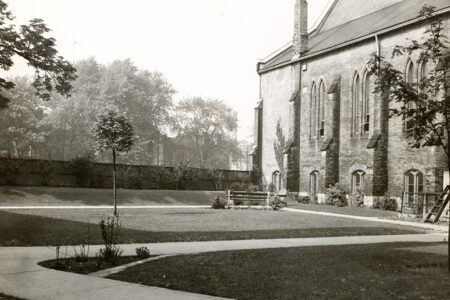
“We’re in the middle of a concrete jungle and in the middle of all the condos, there’s this little patch of grass, beautiful buildings, gardens and trees that have been well maintained over the years. It looks like an oasis,” says John Scarcelli, who’s been St. Mike’s groundskeeper for 17 years.
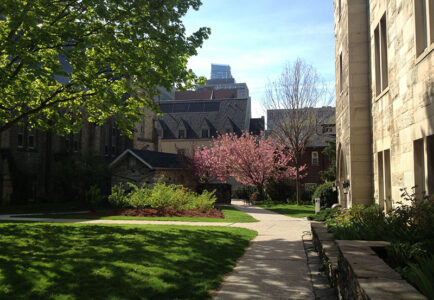
There is a long tradition of Basilians serving as stewards of the campus gardens. Scollard Park, which can be found in the space between Brennan Hall and St. Basi’s Parish, is named for Father Robert Joseph Scollard, CSB, who took care of the flowers that grew there, in addition to his roles as librarian and archivist for St. Michael’s College, the Pontifical Institute of Mediaeval Studies and St. Basil’s. It is home to a rose garden that showcases a variety of heritage roses that bloom for two weeks in July. “The phrase ‘stop and smell the roses’ refers to the flowers growing there. The smell when they’re in bloom is wonderful,” says John.
Another name of note in the annals of the gardens’ history is Father James Wilfrid Dore, CSB. The Dictionary of Basilian Biography describes him as, “an expert and devoted gardener: the beautiful rockery which graces the front of Brennan Hall at St Michael’s was created and maintained by him for many years.” The rockery was built in the 1930s, at the same time as Brennan Hall, and it remains standing today.
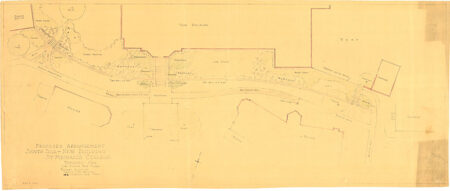
The oak trees along Elmsley Place were planted in 1988 when Father James Kelsey McConica, CSB was President of St. Michael’s. During his tenure, he was known for his work on the gardens. Having studied at Oxford University, he tried to recreate the collegial feeling of the English campus at St. Michael’s.
John noted that the gardens haven’t changed much since the McConica years. He says that he may add a few plants and remove some that didn’t make it over the winter. “It’s really mother nature that’s taking care of them,” he says.

Mother nature has also cultivated a wide variety of trees. In addition to the elm trees, the campus is home to birch trees, sugar maples, Japanese maples, London plain trees, a Northern catalpa tree, a Russian olive tree, and Japanese almond trees. Through proper maintenance these trees have withstood disease and continue to thrive year after year.
The beauty and wonder of St. Mike’s gardens are on full display in June when Convocation, Welcome Day and Alumni Reunion occur. These events are an opportunity for members of the St. Michael’s community to share the scenic campus with their family and friends. Come the fall, the campus changes dramatically when the leaves change to vibrant hues of red and orange.
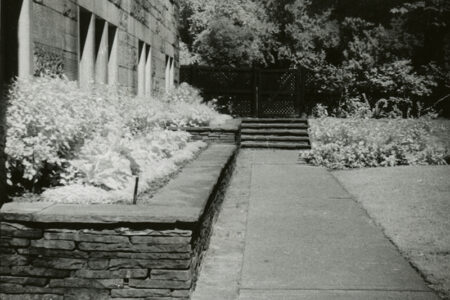
The gardens have made appearances on TV, including Law & Order Toronto and The Handmaid’s Tale, which were filled on campus. “Sometimes I’m watching TV at home, and all of a sudden, I see something familiar and I’m like ‘that’s where I work, that’s my campus and those are the plants I planted.’ It makes me proud,” said John.
The gardens provide an oasis for many different demographics living in the surrounding area. In addition to students, faculty, and staff, the quad is frequently visited by families with young children and people walking their dogs.
As part of the strategic plan for its upcoming 180th anniversary, St. Mike’s is looking at developing a campus and landscape plan to serve the future of the college. Have your say and complete the ‘Reimagining the University of St. Michael’s College Campus’ survey.

